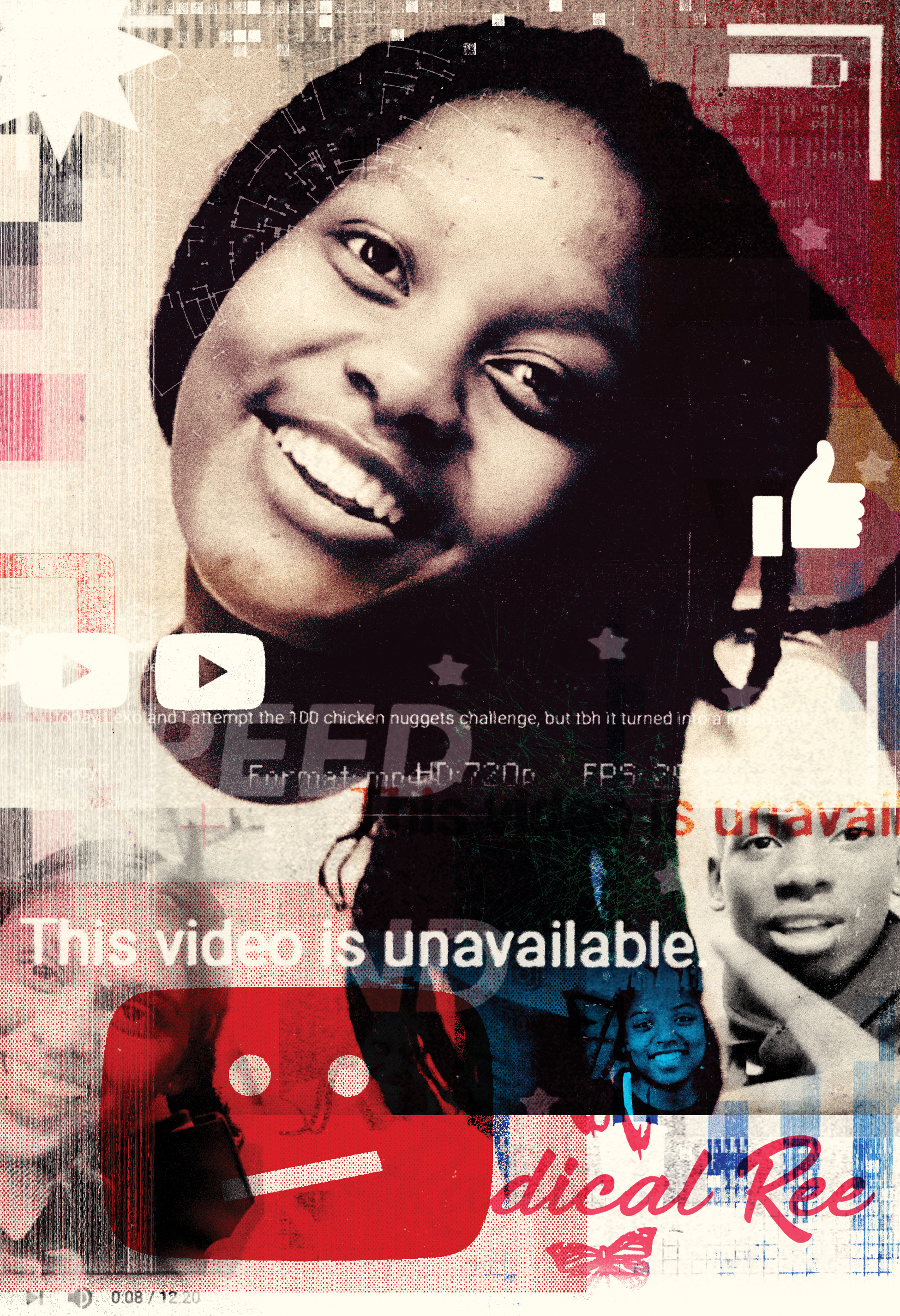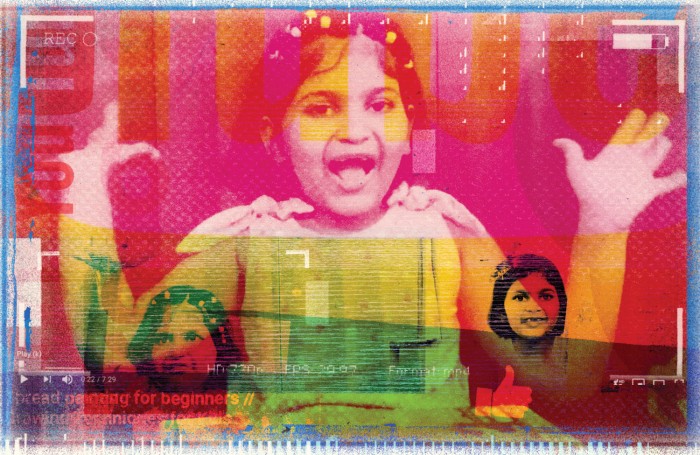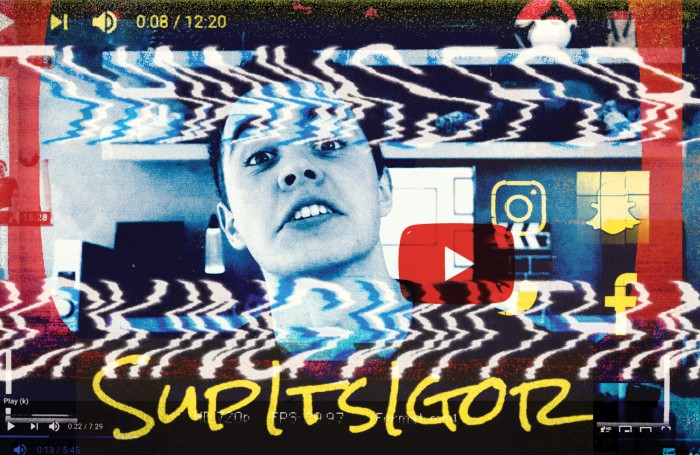Meet the wannabe kidfluencers struggling for stardom

On YouTube, children can become millionaires—seemingly overnight, without trying. The highest paid of them, eight-year-old Ryan Kaji, made $22 million in 2018 by playing with toys on his channel Ryan ToysReview (now Ryan’s World). There are now thousands of similarly famous child YouTubers: babies who have been vlogged since the moment of their birth, 10-year-old streamers showing off video-game tricks, teenage girls giving acne advice from their bedrooms. A survey of 3,000 children conducted by Lego this past summer found that the most coveted profession among those in the US and the UK is “vlogger/YouTuber.” (Astronaut was the least popular choice.) The word “kidfluencer” is now firmly entrenched in the vernacular.
For each of the world’s Ryans, though, there are millions of kids who log on to YouTube every day in the hopes of making it big. “Hi guys, and welcome back to my channel!” they all say, like some kind of invocation to the internet gods.
Why do so many kids want to be YouTubers? Do they only seek fame, or is there more to it: creativity, community, and a future career? How are their parents helping them? And what happens if, after spending thousands of dollars or dropping out of school, it doesn’t work out? We interviewed five not-so-famous young YouTubers from around the world to ask them what they get out of it.
Refuwe Mosomothane
18, Johannesburg, South Africa
In her first YouTube video, uploaded in July 2015 when she was just 14, Refuwe Mosomothane apologizes for moving her hands “a lot.” After the obligatory “Don’t forget to like and subscribe” at the end of the video, the screen goes black … for one minute and 56 seconds.
It’s the simple editing mistake of a YouTube beginner. Fast-forward to today, and 18-year-old Mosomothane’s videos are polished and professional; she even has her own opening credits featuring fluttering butterflies around her channel name, Radical Ree. Her videos are a mixture of clips of her daily life—promposals, baking projects, her first day of senior year—and challenges that are popular on the site (she and a friend once tried and failed to eat 60 Chicken McNuggets in 10 minutes).
Yet although she’s consistently uploaded weekly vlogs for the last two years, at the time of writing Mosomothane had just 558 subscribers to her channel—far too few for her to make any income. (YouTube requires users to have at least 1,000 subscribers for that.) “Growth is painfully slow. At some point, I was like, ‘Okay, there’s no point me doing this,’ ” Mosomothane says over Skype, shrugging her shoulders.
“Growth is painfully slow. At some point I was like, ‘Okay, there’s no point me doing this.’”
What keeps her going, when editing a vlog can take two to three hours out of her day? “I won’t even lie, it’s been a tough journey ... but I had to reevaluate everything,” she says. “I had to take a moment to be like, ‘There are people still supporting you.’ I love recording my day. I love editing. And I had to remind myself of stuff like that.”
No matter how long it takes, Mosomothane aims to reach 1,000 subscribers, but she’s realistic that YouTube likely won’t become her career. “I feel like in South Africa YouTube isn’t a thing that’s very stable, so I would feel more comfortable having it as a side hustle,” she says. For that to work, she’ll have to hope for better growth than she’s had so far: the YouTube analytics website Social Blade estimates that if a YouTuber gets 1,000 views a day, daily earnings will be anywhere from just 25 US cents to $4.
After high school, Mosomothane plans to study film, and hopes to be a producer. “I noticed over the years doing my channel that it’s fun—I would love to do this every day of my life,” she says. “And it kind of came to me. This is what it’s led up to. YouTube has helped me figure out what I want to do later in life, which is pretty cool.”
Dane
10, Dallas

When he got his first subscriber in November 2016, seven-year-old Dane created a grateful video entitled “1 sub yas.” That “1 sub” is his grandma, and in the video he thanks her “so much” for subscribing to his channel while she grins in the background, glasses perched atop her head. Naturally, the video went viral. A shoutout on various big YouTube channels, coverage on Mashable and The Daily Dot, and a popular Reddit thread pushed Dane quickly past 19,000 subscribers.
Dane’s mom, Tammy, a 44-year-old self-employed transcriber, keeps a spreadsheet of every shoutout Dane has received since. In 2018 Pewdiepie, at the time the world’s most popular YouTuber, referenced him in a video and he shot to over 300,000 subscribers. On Dane’s eponymous channel, the now 10-year-old posts videos of himself playing games such as Roblox, an online multiplayer game popular with children under 12.
But when we speak over Skype, Dane hasn’t posted a video in two months. His second-to-last upload is entitled “My channel is pretty much dying”—he is now losing over 1,000 subscribers every time he posts. “I guess it’s because I don’t upload that often,” says Dane. “I just get too sad about it to make videos.” A silver YouTube Play Button, awarded for reaching 100,000 subscribers, gleams on the wall above his head.
Dane says he feels “pressured” to make more videos, but he also says he would like YouTube to be his career when he’s older (“because you can make a lot of money really quickly”).
Tammy, who is camera-shy and steps out of the frame for our conversation, says Dane has earned a total of around $9,000 in his last three years on YouTube. The shoutout from Pewdiepie earned him a windfall that he chose to spend on a small vacation to Oklahoma City with his best friend.
“It felt good—I had a lot of fun,” he says. Yet a declining viewership takes its toll: the merchandise he made didn’t sell well, and although he set up a PO box for fan mail, nothing ever came. “It makes me sad because I actually wanted people to send me stuff,” he says, turning away from the camera and lying down on the family sofa.
What will he be if he can’t be a YouTuber? “I’d like to be a chemist. I’m very interested in science—the periodic table and stuff like that.”
Siddhika
7, Hyderabad, India

Seven-year-old Siddhika is young enough to know she wants to be a YouTuber, but not old enough to really know why. “I don’t knooowww-wuh!” she intones shyly when her mother asks her to sit up straighter during her interview. Yet while she’s quiet in conversation, she is a natural when broadcasting. On her channel, Siddhika’sToysAndTales, which has around 200 subscribers, she unboxes Barbie dolls, makes slime, and paints and draws with effortless confidence.
“She has just grown up watching YouTube. That’s why I think being a YouTuber comes more naturally to her.”
“Welcome to my channel,” she shouts at the start of her Barbie unboxing video. “Don’t forget to subscribe!”
Siddhika’s mom, Trishna, a 33-year-old software engineer, says her daughter picked up the language of the vlogger all on her own. “I didn’t even tell her one line,” she says. “This generation—they don’t see TV shows or movies. She has just grown up watching YouTube. That’s why I think being a YouTuber comes more naturally to her.”
Trishna says Siddhika started asking for her own YouTube channel when she was just three, but the family began filming shortly before her seventh birthday. The weekly videos take over an hour to film and multiple days to edit. “She always tells me, ‘Mama, I don’t know how you do it, but you’ve got to do it,’” Trishna says. “‘You have to make my videos because my friends will watch and it’s fun’… I think she’s already on that track where she’s getting attention and she’s liking it.”
But for Trishna, YouTube fame isn’t something to be glorified. She says she doesn’t let Siddhika know the number of subscribers on her channel and doesn’t want her to get in “famous mode” if the channel grows. “I don’t want her to become rude. It’s not easy to be famous, especially not for a kid,” she says. “She has been wanting this for a very long time. If she grows at it—if she creates good videos, good content, and if she can grow a fan base—then we are supportive.” On the other hand, Trishna says, the family may stop making videos if she gets too busy with work, or if Siddhika changes her mind and becomes embarrassed by the channel.
“IT’S FUN!” Siddhika finally pipes up near the end of the interview. “It’s fun while flilming the videos [she hasn’t quite gotten the knack of saying “filming” yet] and it’s fun that people watch the videos.” Trishna apologies that her daughter isn’t very talkative. “She doesn’t even know what an interview really is,” she says. But there is one question Siddhika has a ready answer for. Would she like to be famous? “Yes!”
Igor van Lamsweerde
20, Haarlem, The Netherlands

When he was 17, Igor van Lamsweerde decided to drop out of school. His YouTube channel was growing consistently, he had started earning more money than his parents, and over 65,000 subscribers tuned in to watch him do challenges, play with fidget spinners, and answer questions from fans. “I remember sitting in class and my only thought was about what videos I was going to make when I was home,” van Lamsweerde says. “I was already thinking about stopping school because I didn’t really enjoy it … When I gained all these followers, it was easy to say, ‘Okay, I’m done. Let’s not go anymore.’”
But the last video on van Lamsweerde’s channel is now over a year old, and he hasn’t uploaded consistently for over two years. In his second-to-last video he begged his viewers for guidance, complaining, “YouTube is so fucking hard.”
“When I quit school and pursued making these videos it went great for a few months,” he says now. “But at some point I saw a decrease in viewership and followers … It was hard. Like, you work really hard on these videos and see that people are not interested anymore.” The grind of making and editing daily videos took a toll on him: “Looking back at it, being that young with that many followers, there’s like an immense pressure of performing.”
After his ambitions for the channel fell apart, van Lamsweerde began editing videos for a local business, and now he has his own production company, Igor Productions. He says he’s “outgrown” his desire to be in the spotlight. “The thing I like about film production is that you’re not always in the spotlight—you’re behind the camera,” he says. Behind him in his flat sits a bookcase filled with electronics and two film clapperboards. He likes that “you don’t have to think of new ideas every day.”
Before the end of our call, Igor says he has a message for young people who want to be internet famous: “I feel like the people who are convinced that they can be influencers are most likely the ones who are going to become influencers. And the people who are not sure this is for them, but they want to try it, most likely aren’t going to be influencers. So maybe that’s a good question for everyone to ask themselves: Is this really something I want to do, or is it just because everyone else is doing it?”

Nathan
5, London
As a three-year-old, Nathan struggled to communicate with his parents but loved to watch Ryan ToysReview. His mother, Jenny, who emigrated from Russia to England in 2012, decided to create a YouTube channel for her son to encourage him to talk. In 2017, Jenny began filming Nathan taking part in educational, family-friendly games—playing with science kits, counting numbers, and identifying colors on screen. His channel, QTiess, gained a small but consistent viewership: at its peak, Jenny says, Nathan earned 10,000 views a month.
Over FaceTime, Nathan is reluctant to communicate, burying his face in his mother’s lap. Now five, he looks up at Jenny, who’s 27, with curious eyes as she discusses life as a YouTube mom.
“We were putting up a backdrop in our house—we had to set up the table, prepare everything, and record for one to two hours to make a 15-minute video,” she says. The family also shelled out for a high-quality camera and a tripod, plus additional props: “Tons of toys were bought for this project. We started thinking it could bring us money. I think we received a check for like £100, but it’s a joke when you’re spending thousands on it.”
Nathan’s channel has now been dormant for two years. “We realized that it was becoming like a duty for him,” Jenny says. “He was coming home after nursery tired, moody, and I was saying, ‘Let’s play! Let’s do this!’ And at that moment I started feeling guilty. It’s his childhood. If he doesn’t want to do this, why do we need to force it?”
But Nathan wants to be a YouTuber again. Jenny says that when kids at school talk about YouTube, Nathan proudly says he has his own channel. She and her husband are now building a studio at the back of their house where Nathan and his younger sister hope to start filming.
For Jenny—who preserves flowers for a living, but also studied architecture and interior design—the videos are a creative outlet and a chance to spend time with her kids. Her husband hopes the children will be able to make money from their videos, and she hopes the experience will help them later in life.
“I would say if they can get into media, it will be easier for them in life. It’s less about money-making on YouTube but if they can be recognized by somebody in the future,” she says, noting that Nathan was offered modeling opportunities (which she turned down). “Now they’re a little bit grown up, it would be their choice if they wanted to do this, whereas then it would be my choice, and I didn’t want to force it.”
Deep Dive
Humans and technology
Building a more reliable supply chain
Rapidly advancing technologies are building the modern supply chain, making transparent, collaborative, and data-driven systems a reality.
Building a data-driven health-care ecosystem
Harnessing data to improve the equity, affordability, and quality of the health care system.
Let’s not make the same mistakes with AI that we made with social media
Social media’s unregulated evolution over the past decade holds a lot of lessons that apply directly to AI companies and technologies.
Stay connected
Get the latest updates from
MIT Technology Review
Discover special offers, top stories, upcoming events, and more.